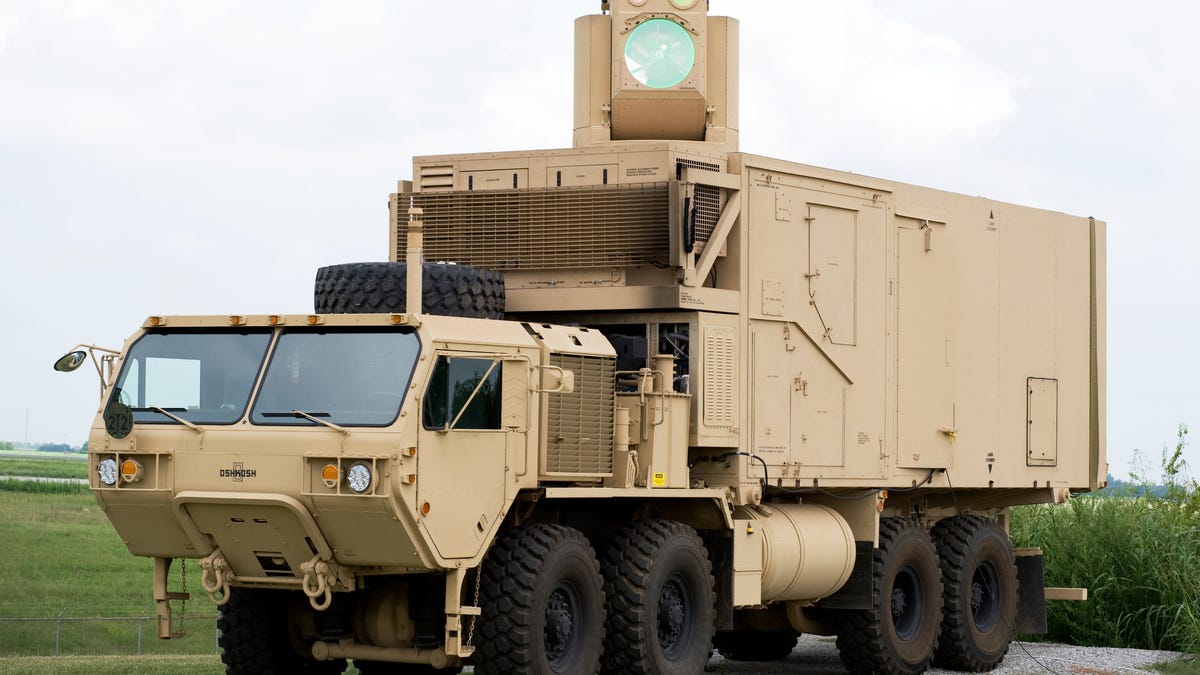Boeing trucks ahead with 8-wheeling laser weapon
The defense contractor is ready to mount a 10-kilowatt solid-state laser on a big Oshkosh HEMTT vehicle. Then comes the real test.

The promise of laser weapons is that they will dispatch enemy missiles and other threats at the speed of light. Progress on those weapons systems, however, sure has been a heck of a lot slower.
When last we heard from Boeing about the HEL TD (High Energy Laser Technology Demonstrator) program in June 2011, the defense contractor had just finished system integration of key components, including the installation of the beam control system and other hardware on the 8-wheeled, 500-horsepower Oshkosh HEMTT (Heavy Expanded Mobility Tactical Truck).
This week, Boeing said that it's now engaged in the next phase of its contract with the U.S. Army Space and Missile Defense Command, in which it will install a 10-kilowatt solid-state laser in the system, which has been slightly renamed as HEL MD, for High Energy Laser Mobile Demonstrator. Field tests will take place in the coming year to let the high-power SSL system show off its dexterity at acquiring, tracking, and defeating "threat-representative" targets.
What threats will those targets represent? Rockets, artillery shells, missiles, and unmanned aircraft, primarily. Boeing has been down this path before -- in May 2009, for instance, it shot down a handful of small UAVs in tests using lasers in its Matrix and Laser Avenger systems. Other defense contractors including Raytheon and Northrop Grumman have also demonstrated similar capabilities on a limited scale in recent years.
It's easy to understand why the Pentagon has been hot for lasers -- proponents have long trumpeted their incredible speed and precision, along with, for the likes of solid-state lasers, a relatively low-cost and seemingly near-infinite supply of "ammo" (so long as there's a reliable supply of electricity handy). But getting there has proved to be quite a challenge, from considerations of size and weight to cooling and efficiency to atmospheric interference.
The 10KW capacity of the HEL MD is fairly modest compared with the power levels the Pentagon aims to achieve -- the 100KW level is generally considered the threshold for "weapons-grade" lasers. It is comparable to the 13.3KW that Northrop Grumman achieved earlier this year with its Firestrike demonstrator laser. Boeing said in its announcement this week that the HEL MD could "subsequently" incorporate a more powerful laser.
Meanwhile, the Office of Naval Research has set a mid-October deadline for proposals to build new prototypes of solid-state lasers that would be mounted on naval vessels to counter small UAVs and small-boat threats.
Also this month, the Army is set to begin testing the Joint High-Power Solid-State Laser (JHPSSL) system at the White Sands Missile Range in New Mexico, with a first high-power demonstration -- that is, at around 100KW -- by the end of the year, according to reporting by Optics.org.
But even after all the ardent promises and frothy press releases over the better part of the last decade or so, laser weapons are still little more than a proof of concept here, a prototype or two there. It may well be another decade or more before they amount to any kind of real presence in the arsenals of the U.S. military.
To pass the time while you're waiting, take a look at where we've been so far:

